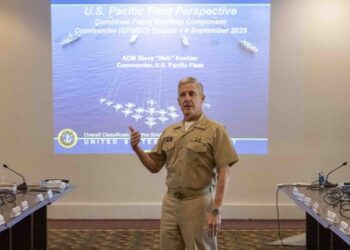Two new reports suggest that the Pentagon may have finally learned how to buy technology at lower cost quickly, at least when it comes to AI-driven capabilities.
One report looks at the Maven Smart System, or MSS, part of Maven, a system for rapidly analyzing and sharing intelligence. Palantir currently has the prime contract and is looking to expand the number of users from hundreds to thousands. But the Army’s 18th Airborne Corps, working with as many as 70 companies in a DevSecOps environment, played a key role in developing the system through a series of exercises called Scarlet Dragon. Emelia Probasco, a Senior Fellow at Georgetown’s Center for Security and Emerging Technology, describes how MSS works in a report out this week.
Without this software, Army fire-support elements—the organizations that coordinate Army and joint fires—do not have easy access to sensor and image data from commercial and military satellites, something the Army has long sought.
Probasco argues this was an important organizational feat, more than a technical one. MSS had senior leaders who championed the program, a mature technology, and direct access to developers and testers. And perhaps most importantly, officials used flexible approaches to risk-management and funding. But the key ingredient was the involvement of leaders who understood three things: the power of artificial intelligence, the needs of the United States military, and the bureaucratic ins and outs of contracts—particularly the sorts of contracts that tech companies need, as opposed to the ones the Defense Department prefers.
A second report published last week by CSIS highlights the U.S. Air Force’s Collaborative Combat Aircraft program as a potential way forward for future aircraft procurement. The Pentagon has requested $8.9 billion in funding for the program over the next five years, “a massive increase over what the DOD was previously spending on the precursor efforts to CCA,” Greg Allen CSIS points out in the recent report, co-written with Isaac Goldston.
In this effort, the Air Force fundamentally changed the way it approaches acquisition, by separating hardware and software development, allowing companies with expertise in each area to participate. The CCA program is structured to allow more entrants to participate and maintain continuous competition. However, the Defense Department will field only about 100 of the CCAs before 2029, showing a need for further work to scale up production of new weapons and lower costs.













